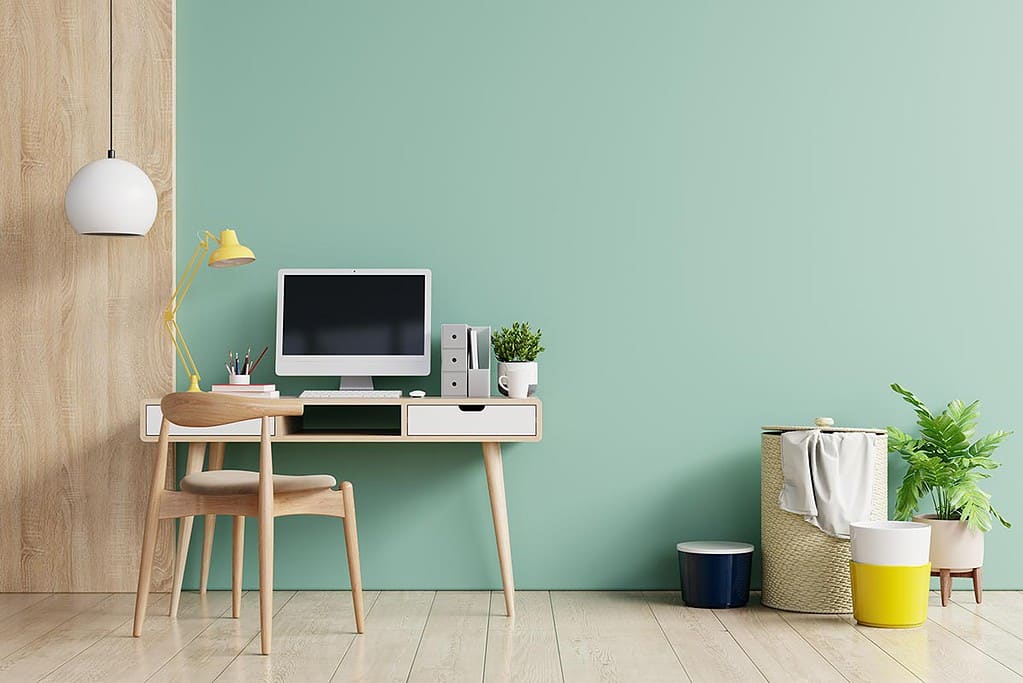In the contemporary landscape of work, the concept of working from home has evolved from a novelty to a norm, particularly with the advent of digital technologies and shifting workplace dynamics.
As more individuals embrace remote work opportunities, the importance of crafting an optimal work from home environment becomes increasingly evident.
Today i will delve into the multifaceted aspects of remote work setups, exploring strategies for designing a workspace conducive to productivity, well-being, and work-life balance.
Designing Your Workspace
The cornerstone of an effective work from home environment is the design of the workspace itself. Remote workers enjoy the flexibility to customize their surroundings according to their preferences and needs, unlike the standardized environments typically found in traditional office settings.

Begin by selecting a designated area in your home that is conducive to concentration and devoid of distractions. Consider factors such as natural light, noise levels, and ergonomic comfort when choosing your workspace. Investing in ergonomic furniture, such as an adjustable desk and supportive chair, can significantly enhance comfort and reduce the risk of musculoskeletal issues associated with prolonged sitting.
Nnewvante Writing Computer Desk 31.5" Bamboo Home Office Table
$133.27 in stock
Zesthouse Modern Home Office Chair Leather Desk Chair
JOISCOPE Home Office Small Gaming Computer Desk
Personalize your workspace with elements that inspire creativity and motivation, whether it be artwork, plants, or sentimental objects. By curating a space that reflects your personality and fosters a sense of ownership, you can create an environment that is conducive to productivity and well-being.
Setting Boundaries
One of the inherent challenges of working from home is the blurring of boundaries between professional and personal life. Without the physical separation provided by a traditional office setting, remote workers must proactively establish boundaries to maintain a healthy work-life balance.
Start by defining clear working hours and communicating them to household members or roommates to minimize disruptions during designated work times. Create a daily routine that incorporates breaks, meal times, and leisure activities to provide structure and prevent burnout. Designate a specific area of your home for work-related activities and avoid using personal spaces, such as the bedroom or living room, for work purposes whenever possible.
Additionally, establish rituals or cues that signal the start and end of the workday, such as changing out of work clothes or engaging in a brief mindfulness practice.
By setting boundaries and adhering to a structured routine, remote workers can cultivate a healthy balance between professional obligations and personal well-being.
Optimizing Technology
In the digital age, technology serves as the linchpin of remote work, enabling seamless communication, collaboration, and productivity. To ensure a smooth and efficient remote work experience, it is essential to invest in reliable technology infrastructure and tools.
Lenovo IdeaPad Laptop, 15.6" FHD Display, Intel Dual Core Processor, 8GB RAM
Begin by assessing your hardware needs, including a fast and reliable computer or laptop, a high-quality webcam, and noise-canceling headphones. Evaluate your internet connection speed and consider upgrading to a higher bandwidth plan if necessary to support video conferencing and file sharing activities.
Familiarize yourself with a suite of productivity tools and software applications designed for remote work, such as project management platforms, cloud storage solutions, and communication channels.
Collaborative tools like Slack, Microsoft Teams, or Zoom facilitate real-time communication and collaboration among remote team members, bridging the physical divide and fostering a sense of connection.
Additionally, explore automation tools and workflows to streamline repetitive tasks and optimize efficiency. By leveraging technology effectively, remote workers can overcome geographical barriers and maximize productivity in a virtual work environment.
Practicing Self-Care
Amid the pursuit of professional success, it’s common to disregard the significance of self-care and well-being. However, neglecting one’s physical and mental health can have detrimental effects on productivity, creativity, and overall job satisfaction.
Remote workers face unique challenges in maintaining a healthy lifestyle, including prolonged sedentary behavior, social isolation, and blurred boundaries between work and personal life.
To mitigate these challenges, prioritize self-care practices that nourish the mind, body, and soul. Incorporate regular physical activity into your daily routine, whether it be through exercise, yoga, or outdoor activities.

Take breaks throughout the day to stretch, hydrate, and recharge your energy levels. Practice mindfulness techniques, such as meditation or deep breathing exercises, to alleviate stress and enhance focus.
Establish a healthy sleep routine and prioritize adequate rest to optimize cognitive function and mood regulation. If you struggle to sleep then look for ways to help you get a good night rest, a White Noise Machine can help. Cultivate social connections outside of work by participating in virtual gatherings, joining online communities, or pursuing hobbies and interests.
By prioritizing self-care and well-being, remote workers can sustainably navigate the demands of remote work and thrive in both their professional and personal lives.
Crafting Your Ideal Work from Home Environment
In conclusion, designing the perfect work-from-home environment requires a multifaceted approach that encompasses workspace design, boundary setting, technology optimization, self-care practices, and fostering connectivity.
By prioritizing these elements and tailoring them to individual preferences and needs, remote workers can create a conducive environment that promotes productivity, well-being, and work-life balance.
Whether you’re a seasoned remote worker or new to the world of telecommuting, investing time and effort into crafting your ideal work from home environment can yield significant benefits in terms of job satisfaction, performance, and overall quality of life.
FAQ
Common questions on work from Home Environment
How can I maintain focus and productivity while working from home?
Establish a designated workspace free from distractions, follow a structured routine, and leverage productivity tools and techniques to stay organized and on track.
What effective strategies can be employed to alleviate feelings of isolation while working remotely?
Stay connected with colleagues through virtual meetings, participate in online communities, and prioritize regular communication and collaboration with team members.
How important is it to set boundaries between work and personal life when working from home?
Setting clear boundaries helps prevent burnout, maintain a healthy work-life balance, and preserve overall well-being and productivity in the remote work environment.






